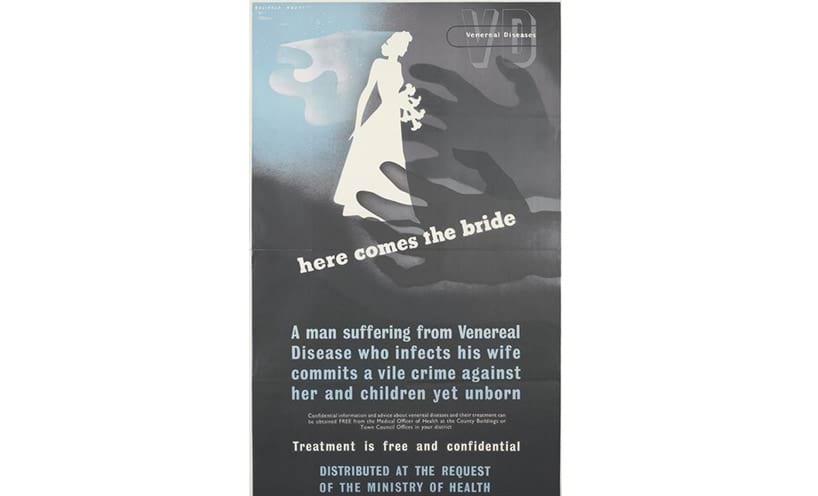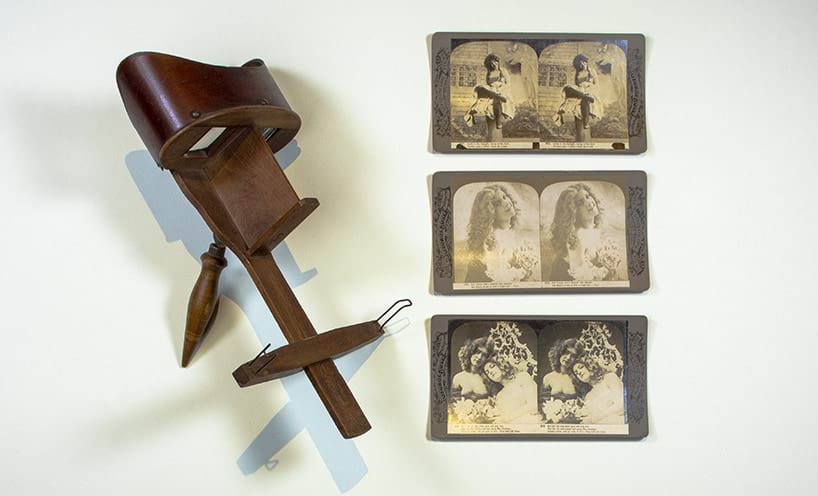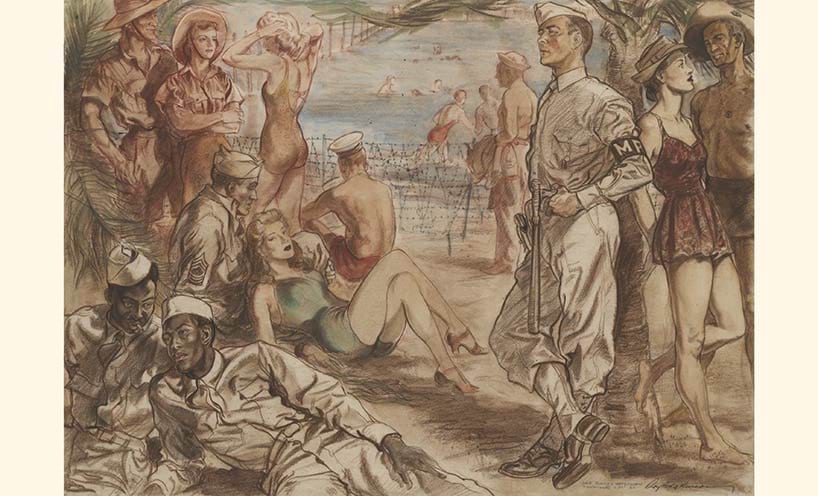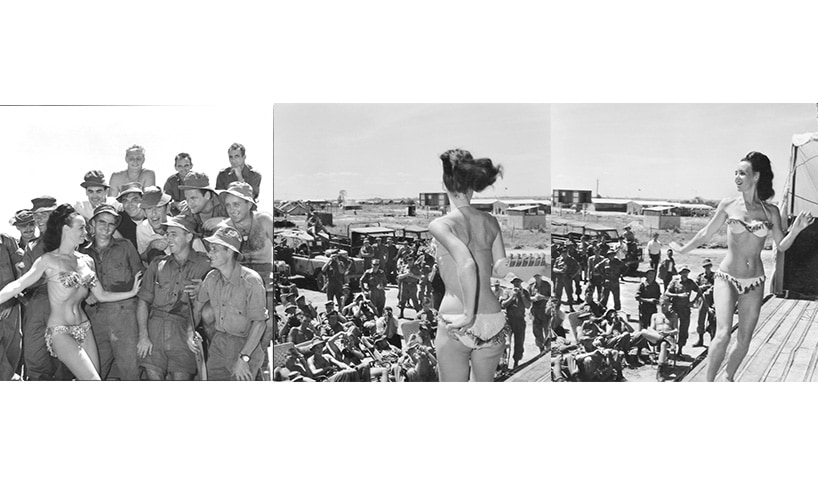Historically military authorities have attempted to balance troop morale against matters of discipline, public order, sexual health and combat-readiness.
Sexualised recreations and entertainments for troops have been alternatively condemned, and tacitly approved.
Discover how many succumbed to the 'traditional diseases'...
Here comes the bride, 1943
by Reginald Mount (1906–1979)
photolithograph on paper
The Blue Light Outfit, c1917
Standard issue, Australian Imperial Force
Blue Light Outfits, issued during both World Wars were named for the Army treatment depots, illuminated with blue lights, where men received treatment for venereal disease (VD)—what clinicians now call sexually transmitted infections (STIs).
Ointment No. 1 ‘BROWN’ (Argyrol and potassium permanganate) was used to combat gonorrhoea, while Ointment No. 2 ‘WHITE’ (mercury-chloride) was effective against syphilis.
Attempts at using the outfits were often thwarted by inexperience or alcohol. Many women refused to use them because of the irritating chemicals. Nonetheless, the head of the Australian Red Cross Lieutenant-Colonel Sir James Barrett reported that of 4,580 reported exposures to syphilis and gonorrhoea amongst soldiers, only thirteen resulted in infections when soldiers used the kits properly.
Stereoscope and slides, c 1908
Rose’s Stereoscopic Views
Erotic and sexually provocative images have long been popular diversions for troops far removed from romantic prospects. The explicitness of the images—be they French postcards, pin-ups, or pornographic videos—has changed with the times, but the end-goal—of placing the viewer in a fantasy world, away from the dangers of the battlefront—remains unchanged.
This stereoscopic card viewer was, perhaps, a more compelling ‘dream factory’ than the standard set of French postcards—its subjects are rendered in three dimensions.
One Sunday afternoon in Townsville, 1942
by Roy Hodgkinson (1911–93)
Australian and American military authorities widely discriminated against the 8,000 African American troops serving in Australia during the Second World War (1939–45). A noxious stereotype that the men were oversexed and irresistible to women inspired local councils across Australia to establish exclusive clubs and dancehalls for Black Americans. Social pressure prevented all but the most determined white women from attending. Queensland police, meanwhile, barred Aboriginal and Torres Strait and Pacific Islander women from meeting the Americans after dances so as to keep wider discussions of Civil Rights between them to a minimum.
Younger, working-class white Australians tended to be more welcoming of African American GIs. Davis Lee, reported in the Baltimore Afro-American in April 1942 that when United States military police tried to bar black troops from attending a mixed dance, Australian soldiers ‘forced all the girls to leave the hall.’ In Sydney, Jazz, Jive and Boogie-Woogie music, together with Black American modes of speech and dress, inspired a raucous new Australian youth subculture—the Bodgies (males) and Widgies (females) which would extend after the war until the 1970s.
Concert party au Go-Go, 1966
Bien Hoa, South Vietnam
Backup Go-Go dancer, Toni Reece, outshone the Australian do-wop surf-rock group The Deltones on their 1966 tour of South Vietnam—at least according to the men of the 1st Battalion, Royal Australian Regiment (1RAR).
Updated





